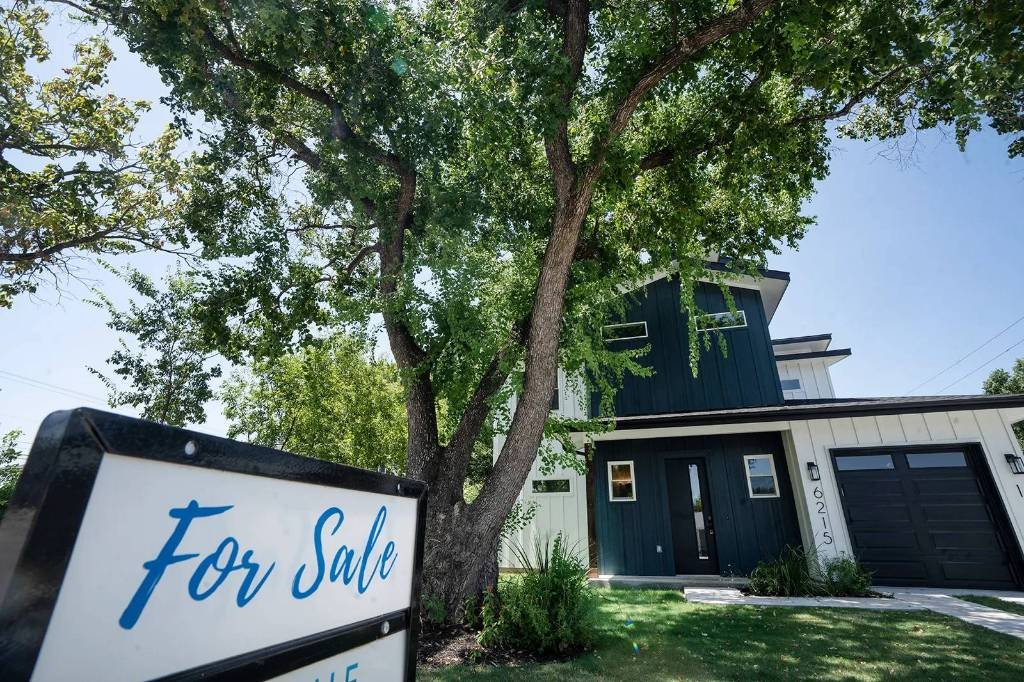
- Thurs. July 20th, 2023) – As Austin housing returns to pre-pandemic levels, some buyers are seeing opportunities
The Austin housing market is starting to look a lot more like 2019, before the pandemic sent demand and prices skyrocketing to record highs.
For the past three years, multiple offers, bidding wars and all-cash deals became the norm for those hoping to get into a home in Central Texas. Now, the picture is changing.
That’s the upshot from a report on the June housing market by the Austin Board of Realtors. Here are the takeaways:
- Last month, residential home sales in the metro area declined 8.5% year over year to 3,147 closed sales while the median price dropped 9.6% to $483,000.
- New listings declined 23.6% year-over-year to 4,638 listings.
-
- The number of homes on the market jumped 38.4% to 9,631 active listings, causing housing inventory to skyrocket to 3.7 months of inventory, up 1.6 months from June 2022.
- Pending sales increased 19.1% and homes spent an average of 61 days on the market, 43 more days than in June 2022.
Clare Losey, Austin Board of Realtors housing economist, sees a market that has held steady but still needs increased inventory to house our region’s growing population.
Despite a slight uptick in mortgage rates in June, the median sales price rose a modest 2.7% from May, Losey said.
“Overall, the moderation in home prices throughout the region over the past year has eased the affordability constraint posed by higher rates, but more work needs to be done across the region and into the future to fully address this challenge,” Losey said.
- The Central Texas region simply needs more inventory — particularly at price points affordable to first-time buyers— as home prices remain elevated relative to incomes across the region,” she said.
Losey added that the region’s economy is a major factor in the housing market’s performance.
“The diverse and resilient economy that has been built in Central Texas, particularly over the past two decades, is instrumental in helping the region, and our housing market, withstand less than ideal economic conditions,” she said.
Central Texas is experiencing a manufacturing boom, led by Austin-based automaker Tesla. The company operates a $1.1 billion manufacturing facility in southeastern Travis County, where it is producing its Model Y electric SUVs and Cybertruck electric pickups.
- In addition, tech giant Samsung is building a $17 billion semiconductor manufacturing facility in Taylor.
While Austin’s tech industry has experienced layoffs and hiring freezes, companies continue to relocate here and bring new jobs, and the sector continues to be a major driver of the Central Texas economy.

Despite a slight uptick in mortgage rates in June, the median sales price in Central Texas rose a modest 2.7% from May. A view from the trenches
Warren McEnulty, a Realtor with Papasan Properties Group, has seen the Austin real estate downshift firsthand.
Now that the frenzy has died down, buyers have time to make more rational decisions with more inventory and more wiggle room on pricing, he said.
“It has opened up opportunities for buyers who in the past couple of years couldn’t get in,” McEnulty said. “It was too competitive to find anything in the areas they wanted to be.”
More first-time buyers are back in the market, he said: “We’re seeing more FHA loans. With more houses on the market and prices stabilizing, this is their time to do it.”
However, McEnulty said, rising interest rates are causing trepidation among buyers. On the upside, it has led sellers to lower prices, which can help balance out the pain of the current 7.6% fixed-interest rate for a 30-year loan.
“You’re starting to see first-time homebuyers come back to the market and accept where the rates are because of the price points houses are selling at now,” he said.
Looking forward, McEnulty sees interest rates continuing to rise in the second part of the year.
“Realistically, it doesn’t seem like we’re going to see any price increases for the remainder of the year,” he said. “It just seems right now that prices are going to continue to fall.”
Posted by:
Jack Dempsey, President
401 Gold Consultants LLC
jdemp2003@gmail.com

